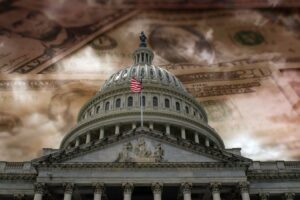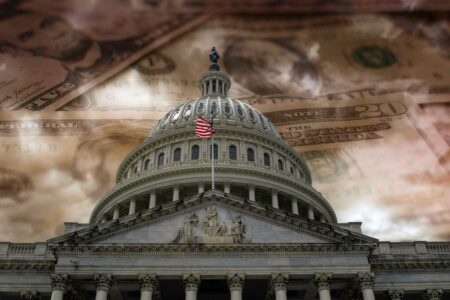Key Takeaways
- Trade progress lifts markets; tariffs drop to mutual 10% level
- Stocks surge; tech leads rally after weekend China trade breakthrough
- Earnings strong, but revenue growth slower than profit expansion pace
Stocks closed the week ending May 9th little changed. The S&P 500 lost 0.5% while both the Nasdaq Composite and Dow Jones Industrial Average closed lower by 0.3%. The only gainer for the week was small cap stocks which closed higher by 0.1%. What a difference a weekend can make.
After announcing progress on a trade deal with China on Sunday, futures markets opened sharply higher. In premarket trading, the S&P 500 futures are higher by over 3% and the Nasdaq 100 futures are up over 4%. The trade deal, announced after talks took place in Switzerland over the weekend, will see the U.S. drop its reciprocal tariff rate on China down to 10%. A 20% tariff tied to fentanyl will remain in place. Beijing will meet the U.S. reductions, dropping tariffs on U.S. goods to 10%. It should be noted; however, the agreement expires after 90 days if a permanent deal cannot be reached.
The positive development has sent oil prices higher as well, with crude oil up over 3.5% in premarket trading. Gold prices, at the other end of the spectrum, are down by nearly the same amount. Bonds are also down, pushing interest rates higher. In premarket activity, rates on the benchmark 10-year note are up slightly to 4.44%.
In other news, President Trump is set to sign an Executive Order this morning aimed at lowering prescription drug prices. The order will tie prices the U.S. pays for medications to prices other countries pay. Currently, the U.S. pays some of the highest rates for in the world for medications. Part of the reason for that is other nations with single payer systems can more effectively negotiate prices, whereas in the U.S., the disparate system lacks the negotiating strength of a single payer system. Details of the Executive Order are expected later this morning.
Turning to earnings, we’re now 90% of the way through the season. Based on companies that reported already and those still scheduled to report, earnings are on track to be up 13.4% in the first quarter according to FactSet. That places the 12-month forward-looking price-to-earnings ratio at 20.5. Healthcare, Communication Services, IT and Utilities have been the best performing sectors. One item that stands out, however, is the revenue growth rate is tracking at 4.8%. This suggests the profits are not necessarily being driven by greater sales. While we seem to be nearing resolution for the current trade war, I am interested in where revenue growth ultimately settles for both this quarter and next.
We do have a couple earnings worth noting this week. Cisco Systems will report after the close Wednesday and Walmart reports before the open on Thursday. I think both of these companies are interesting because they offer a pretty comprehensive view of the economy. Cisco gives investors insight into global technology spending. Walmart is much more U.S. centric but their view on inflation and how tariffs may impact prices is salient.
Although it’s a much slower week on the earnings front and economic calendar, there are a couple items worth noting. On Tuesday, the Consumer Price Index (CPI) is scheduled for release. That will be followed on Thursday by the Producer Price Index (PPI). Then on Friday, we’ll get the latest read on Consumer Confidence and Consumer Expectations.
Heading into today, we’re seeing a massive rally in equities with technology leading the way. Shares of Amazon are up 7.5%, Dell is higher by nearly 6%, Nvidia is indicated up 4.5% and Tesla is up nearly 8%. Pharmaceutical stocks are indicated lower ahead of the President Trump’s Executive Order with Eli Lilly down nearly 3.5% and AbbVie down over 4%.
For today, I’m very interested in whether equities can hold their gains. A key level, which I have spoken about, is the 200-day moving average. In the S&P 500, that is right around 5750 and we look set to test that level. I’ll also reiterate that it’s not uncommon to see important levels serve as resistance and therefore, I would not be surprised if it takes a couple tries before definitively breaking above and closing above that level. I’m also watching volatility. In addition to the 200-day moving average price level, I’d also like to see volatility fall back down near its historical average of 16. As always, I would stick with your investing plan and long-term plans.
tastytrade, Inc. commentary for educational purposes only. This content is not, nor is intended to be, trading or investment advice or a recommendation that any investment product or strategy is suitable for any person.
Read the full article here
















